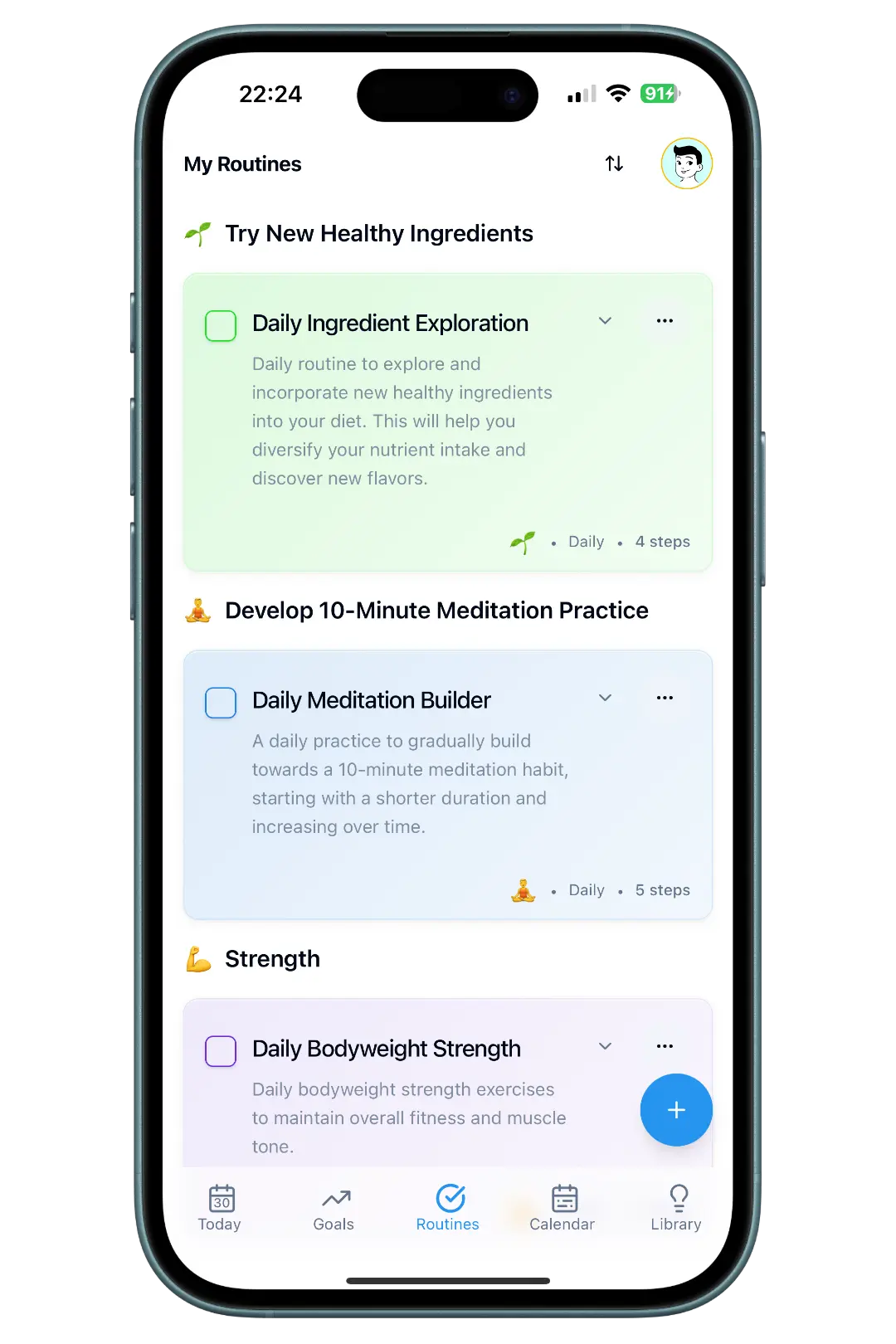
How to Set Achievable Health Goals and Actually Reach Them
January 19, 2025
Setting health goals is easy. Sticking to them? That's where many of us falter. The key often lies not in willpower alone, but in how we set those goals. Here's how to define targets you can actually hit.
1. Get SMART About Your Goals
The most effective goals follow the SMART framework:
- Specific: What exactly do you want to achieve? (Not "get healthier," but "walk for 30 minutes 5 days a week.")
- Measurable: How will you track progress? (Using a step counter, logging workouts in ProgressMade, tracking pounds lost.)
- Achievable: Is the goal realistic given your current situation, resources, and time? Start small and build.
- Relevant: Does this goal align with your overall health values and priorities? Why is it important to you?
- Time-bound: When do you want to achieve this goal? Set a deadline or timeframe (e.g., "by the end of next month," "over the next 12 weeks").
2. Break Down Mountains into Molehills
Large, ambitious goals can feel overwhelming. Break them down into smaller, weekly or even daily mini-goals.
- Goal: Run a 5k in 3 months.
- Mini-goal (Week 1): Run/walk for 20 minutes, three times this week.
- Mini-goal (Daily): Lay out running clothes the night before.
Achieving these smaller steps builds momentum and confidence.
3. Focus on the Process, Not Just the Prize
While the end goal is important, focus your energy on the daily and weekly actions (the process) needed to get there.
- Instead of obsessing over losing 10 pounds, focus on consistently packing healthy lunches and hitting your scheduled workouts.
- The outcome is often a natural result of consistently following the process.
4. Plan for Roadblocks
Life inevitably throws curveballs. Think ahead about potential obstacles and how you might handle them:
- Obstacle: Busy work week means no time for the gym.
- Plan: Have a 15-minute home workout routine ready as a backup.
- Obstacle: Temptation at social events.
- Plan: Decide beforehand what you'll eat/drink or practice polite refusal.
5. Write It Down and Keep it Visible
Putting your goals in writing makes them more concrete. Keep them somewhere you'll see them regularly – on your fridge, bathroom mirror, or as your phone background.
6. Track Your Progress Visually
Seeing how far you've come is incredibly motivating. Use tools like ProgressMade:
- Log the completion of your mini-goals and process steps.
- Celebrate streaks and milestones visually.
- Use the data to see patterns and adjust your approach if needed.
7. Celebrate Every Step Forward
Don't wait until you reach the final destination to celebrate. Acknowledge and reward yourself for achieving mini-goals and sticking to the process.
- Finished your planned workouts for the week? Treat yourself to a relaxing bath or a new workout song.
- Reached a milestone? Share your success with a friend.
8. Be Kind to Yourself and Adjust as Needed
Perfection isn't the goal; progress is. If you slip up or fall short, don't beat yourself up. Acknowledge it, learn from it, and get back on track with your next planned action.
- Your goals aren't set in stone. If something isn't working or your circumstances change, it's okay to reassess and adjust your goals.
Setting achievable goals is a skill. By using these strategies, you can move from wishful thinking to tangible results and build lasting positive changes in your health.
